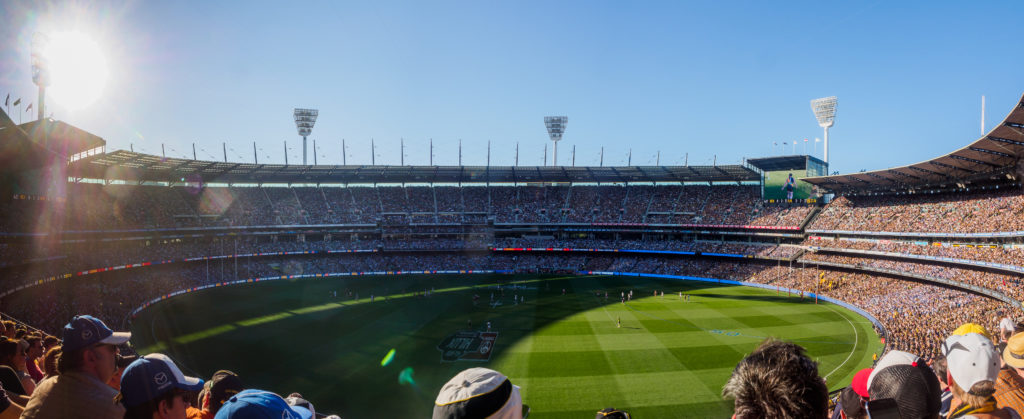December 15, 2019
There’s a lot of confusion surrounding small cells and distributed antenna systems (DAS). Because both use compact radio equipment to improve the signal in different coverage areas, building owners may believe that they’re essentially interchangeable. But while the two technologies share a number of similarities, there are key differences between the design, installation, and deployment of each network. Learn more about Small Cell Vs. DAS and how you can decide which one is right for your property
In-Building Wireless Solutions: Small Cell Vs. DAS
Both small cells and DAS are forms of in-building wireless that property owners can use to augment their existing coverage. While there’s no doubt that the cellphone signals of today have improved considerably over the years, not everyone can make calls, download videos, or operate apps when they’re on the move. Properties are subject to any number of obstructions, including fortified construction, tall trees, and heavy traffic. This can do more than frustrate users and impede productivity, it can also interfere with public safety in the event of an emergency.
If you’ve noticed that your calls drop in certain parts of your building, distributed antenna system DAS or small cells could be the answer to making dead zones a thing of the past. Either technology can increase your network coverage by extending the power of the incoming carrier signals. Installers will place small, discrete nodes around the property to distribute the wireless signal. It can virtually guarantee reliability in even the most troublesome parts of the property.

The Main Differences in Small Cell Vs. DAS
Small cell vs. DAS essentially comes down to how the systems are configured and operated. With small cell, each individual node has a single power supply. The cells work on their own, unlike DAS where all antennas connected to a remote function as one unit. DAS is also more versatile, able to support several frequencies whereas small cells can only support one or in some cases two. This translates into DAS being able to handle multiple carriers and small cell being primarily single carrier only.
In addition, DAS only needs one backhaul pipe, but each small cell requires its own connection. (The backhaul connection links each individual piece of equipment back to the larger network) DAS may use base stations to convert a signal or they may rely solely on the antennas to carry the signal from outside, meaning DAS typically requires far more equipment than small cells. DAS was also designed to support more users than small cell. Just one base transceiver station (BTS) can handle nearly 2,000 users. A single cell may only support up to 25 people.
How to Choose Between Small Cell and DAS
Unsurprisingly, small cells are recommended for smaller buildings that rarely experience a sharp influx in traffic. In general, small cell technology is easier and less expensive to install than DAS. Wireless coverage can be improved with relatively simple nodes that can be placed throughout the property. The design process for small cells typically involves finding all dead zones on the property before placing a node in the area to provide adequate coverage.

DAS might be a better choice if you need superior connectivity in a large building. Sports stadiums, airports, and major concert venues might use DAS to support all users on the property, whether on the grounds or inside the structure. If you own an office building with several floors, DAS can support most business equipment and employee devices, so everyone can be productive and safe on the job.
Installation Challenges
There are a number of installation challenges that may arise along the way with either technology. Some property owners may find that their cellular signals weren’t as strong as they originally believed it to be. Some forms of DAS systems rely on local towers, so if those towers are too far or too weak, you may need a different in-building wireless solution. For major venues that experience serious spikes in traffic when at full capacity, even DAS solutions with multiple base stations may not be able to handle the traffic.
With small cells, one common problem is linking each piece of equipment to the larger network. Unlike macro cells, it can be difficult to establish backhaul connections for each small cell, especially if you’re using them outdoors. Small cells are also much more limited than DAS. So, if you decide to repurpose your building or expand it for any reason, your small cells may not be able to keep up. As the 5G network gets ready to make its debut, you need to keep in mind how your coverage will fare in the future.

Additional Considerations for In-Building Wireless Solutions
If you’re hoping to increase network capacity, the connectivity solution you choose should be customized to fit your property. Passive DAS networks with a coaxial cable can be relatively easy to install, while active DAS networks with fiber optic cabling will be more complex (and costly). If your property is large enough though, you need to make connectivity a priority. Like power and plumbing, connectivity is a utility that is no longer a luxury.
Finding a Wireless Partner
Deciding between small cells and DAS can be as easy as finding the right partner. If you have questions about how each technology can be used on your property, contact us today. We can tell you more about how to supplement your existing connectivity by using the resources at your disposal. We can also present additional options that you may not have even considered. For example, you may be able to use small cells and DAS in conjunction with one another. Or you may be able to forego base stations to simplify the installation process.
We have a number of different packages available, depending on whether you need a quick consultation or full installation and maintenance services. We step in wherever you need us to, so you don’t pay a penny more than you need to.
